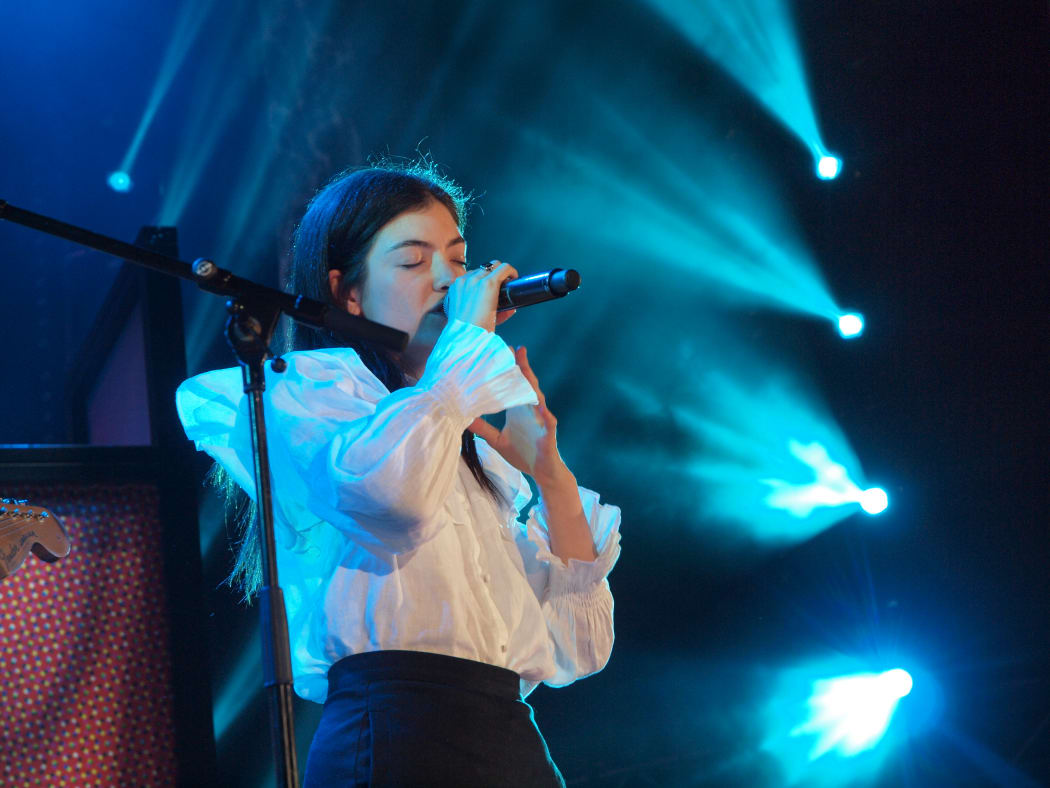
Lorde Photo: James Dann
Not many people were ‘in the know’ before Auckland’s international songstress Lorde dropped a new five-track EP – in te reo Māori.
The surprise launch drew a wide range of reactions, from joy, awe, and wonder at the world-wide exposure of the language; to cynicism and accusations of cultural appropriation.
Many people who were not sold on it took immediately to social media, not necessarily to complain but to voice their unease at the idea that a rich, pākehā pop-star had, perhaps tokenistically, co-opted a taonga of Māori culture for her own edification.
Today on The Detail, Emile Donovan talks to Hēmi Kelly, who helped Lorde translate the title track, Solar Power – or Te Ao Mārama. He is a te reo writer, teacher and artist.
He says there’s a lot more to it than just translating words.
“When it comes to translating a song that’s already been composed there are a few other things you need to take into consideration when you go about interpreting or translating the lyrics to that song.
“Firstly you want to understand what the composer intended, or meant when they wrote these words, what they were thinking, what’s the narrative or story behind these words?
“So in the first instance it was sitting down with Ella (Yelich-O’Connor, or Lorde) and hearing her story behind each of these songs.”
Te Ao Mārama translates to ‘the world of light’ rather than ‘Solar Power’ and is an example of how the Māori version departs from the English.
The translation had to sound natural and fluent to a Māori speaker and in a lot of cases a straight translation just wouldn’t work without sounding clunky.
You’re also restricted by the tune and the syllable count, so that needed a lot of working around.
Kelly says he was “blown away and buzzed out” when asked if he was keen to work with Lorde, especially knowing she was keen to push this kaupapa.
He had full confidence right from the start in the project, based on who was involved – including his mentor Dame Hinewehi Mohi and his cousin Hana Mereraiha - and how it was being run.
“Everything felt right to me,” he says. That included Lorde’s intentions, which he describes as “good and genuine”.
“This album, if you look at the songs and listen to the music, there’s a theme that runs through all of these songs and they all relate to our natural environment here in Aotearoa, and her memories and places of significance to her and her whānau.” The language directly relates to that.
Kelly says Māori artists in particular have endorsed and supported the project as being good for the reo. He can understand where some of the negative discourse is coming from but says it’s not healthy to be restricting the language to any one people or place.
“The vast majority are aware that for our language to continue, to survive in 2021 and beyond, it needs to inhabit every single part of our society, which includes forms of entertainment. We haven’t kicked up a stink when we’ve seen Dave Dobbyn and other non-Māori do this a few years ago with the first release of Waiata Anthems.
“I think the difference here is Lorde’s platform.”
Already that’s being seen in the positive comments coming from around the world in reaction to the songs, says Kelly.
“If it’s creating exposure to our language, promoting our language … then let it be. Why are we over-complicating the situation, or politicising the situation, when it doesn’t need to be? We’ve got nothing to lose at all.”

PIJF Photo: .

